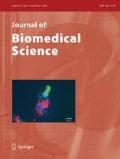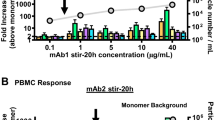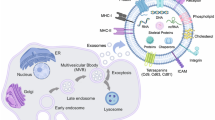Abstract
The major aim of this paper was to determine whether cationic microspheres (CM), consisting of the permeable polymer Eudragit® RS 100 plus the cationic surfactant dioctadecyl-dimethyl-ammonium bromide (DDAB18), could bind to double-stranded peptide nucleic acid PNA-DNA-PNA (PDP) chimeras exhibiting decoy activity against NF-κB transcription factors. Microspheres were produced by the ‘solvent evaporation method’ and centrifugation at 500, 1,000 and 3,000 rpm to obtain different-sized microparticles. Microsphere morphology, size and size distribution were determined by optical and electron microscopy observations. In order to determine their binding activity, double-stranded DNA-based and PDP-based decoy molecules were incubated with different amounts of microparticles in the presence of 100 ng of either32P-labeled DNA-DNA or DNA-PDP hybrid molecules or cold PDP-PDP hybrids. The complexes were analyzed by agarose gel electrophoresis. The resistance of32P-labeled DNA-DNA and DNA-PDP molecules in the presence of serum or cellular extracts was evaluated after binding to CM by gel electrophoresis analysis. DDAB18 Eudragit RS 100 microspheres are able to bind to DNA-PDP and PDP-PDP hybrids, to deliver these molecules to target cells and to protect DNA-PDP molecules from enzymatic degradation in simulated biological fluids. In addition, when assayed in ex vivo conditions, DDAB18 Eudragit RS 100 microspheres exhibited low toxicity. The results presented in this paper demonstrate that CM can be considered suitable formulations for pharmacogenomic therapy employing double-stranded PDP chimeras.
Similar content being viewed by others
References
Ahn JD, Morishita R, Kaneda Y, Lee KU, Park JY, Jeon YJ, Song HS, Lee IK. Transcription factor decoy for activator protein-1 (AP-1) inhibits high glucose- and angiotensin II-induced type 1 plasminogen activator inhibitor (PAI-1) gene expression in cultured human vascular smooth muscle cells. Diabetologia 44:713–720;2001.
Ball DS, Heckman R, Olenick SW, Folander HL, Reed J 3rd In vitro stability of tris-acryl gelatin microspheres in a multipharmaceutical chemoembolization solution. J Vasc Interv Radiol 14:83–88;2003.
Borgatti M, Breda L, Cortesi R, Nastruzzi C, Romanelli A, Saviano M, Bianchi N, Mischiati C, Pedone C, Gambari R. Cationic liposomes as delivery systems for double-stranded peptide nucleic acid (PNA)-DNA chimeras exhibiting decoy activity against nuclear factor-κB transcription factors. Biochem Pharmacol 64:609–616;2002.
Borgatti M, Lampronti I, Romanelli A, Pedone C, Saviano M, Bianchi N, Mischiati C, Gambari R. Transcription factor decoy molecules based on a peptide nucleic acid (PNA)-DNA chimera mimicking Sp1 binding sites. J Biol Chem 278:7500–7509;2003.
Borgatti M, Romanelli A, Saviano M, Pedone C, Lampronti I, Breda L, Nastruzzi C, Bianchi N, Mischiati C, Gambari R. Resistance of decoy PNA-DNA chimeras to enzymatic degradation in cellular extracts and serum. Oncol Res 13:279–287;2003.
Cho-Chung YS. CRE-palindrome oligonucleotide as a transcription factor decoy and an inhibitor of tumor growth. Antisense Nucleic Acid Drug Dev 8:167–170;1998.
Cho-Chung YS, Park YG, Nesterova M, Lee YN, Cho YS. CRE-decoy oligonucleotide-inhibition of gene expression and tumor growth. Mol Cell Biochem 212:29–34;2000.
Demidov VV, Potaman VN, Frank-Kamenetsk MD, Egholm M, Buchard O, Sonnichsen SH, Nielsen PE. Stability of peptide nucleic acids in human serum and cellular extracts. Biochem Pharmacol 48:1310–1313;1994.
Esposito E, Cortesi R, Luca G, Nastruzzi C. Pectin-based microspheres: A preformulatory study. Ann NY Acad Sci 944:160–179;2001.
Esposito E, Roncarati R, Cortesi R, Cervellati F, Nastruzzi C. Production of Eudragit microparticles by spray-drying technique: Influence of experimental parameters on morphological and dimensional characteristics. Pharm Dev Technol 5:267–278;2000.
Esposito E, Sebben S, Cortesi R, Menegatti E, Nastruzzi C. Preparation and characterization of cationic microspheres for gene delivery. Int J Pharm 189:29–41;1999.
Furuse J, Ishii H, Satake M, Onaya H, Nose H, Mikami S, Sakai H, Mera K, Maru Y, Yoshino M. Pilot study of transcatheter arterial chemoembolization with degradable starch microspheres in patients with hepatocellular carcinoma. Am J Clin Oncol 26:159–164;2003.
Gambari R. Peptide nucleic acids (PNAs): A tool for the development of gene expression modifiers. Curr Pharm Des 7:1839–1862;2001.
Ishibashi H, Nakagawa K, Onimaru M, Castellanous EJ, Kaneda Y, Nakashima Y, Shirasuna K, Sueishi K. Sp1 decoy transfected to carcinoma cells suppresses the expression of vascular endothelial growth factor, transforming growth factor betal, and tissue factor and also cell growth and invasion activities. Cancer Res 60:6531–6536;2000.
Lebedeva I, Stein CA. Antisense oligonucleotides: Promise and reality. Annu Rev Pharmacol Toxicol 41:403–419;2001.
Mann MJ, Dzau VJ. Therapeutic applications of transcription factor deocy oligonucleotides. J Clin Invest 106:1071–1075;2000.
Meyer O, Kirpotin D, Hong K, Sternberg B, Park JW, Woodle MC, Papahadjopoulos D. Cationic liposomes coated with polyethylene glycol as carriers for oligonucleotides. J Biol Chem 273:15621–15627;1998.
Mischiati C, Borgatti M, Bianchi N, Rutigliano C, Tomassetti M, Feriotto G, Gambari R. Interaction of the human NF-kappaB p52 transcription factor with DNA-PNA hybrids mimicking the NF-kappaB binding sites of the human immunodeficiency virus type 1 promoter. J Biol Chem 274:33114–33122;1999.
Morishita R, Aoki M, Kaneda Y. Decoy oligodeoxynucleotides as novel cardiovascular drugs for cardiovascular disease. Ann NY Acad Sci 947:294–301;2001.
Nielsen PE, Egholm M, Berg RH, Buchardt O. Sequence-selective recognition of DNA by strand displacement with a thymine-substituted polyamide. Science 254:1497–1500;1991.
Penolazzi L, Lambertini E, Borgatti M, Piva R, Cozzani M, Giovannini I, Naccari R, Siciliani G, Gambari R. Decoy oligodeoxynucleotides targeting NF-kappaB transcription factors: Induction of apoptosis in human primary osteoclasts. Biochem Pharmacol 66:1189–1198;2003.
Piva R, Gambari R. Transcription factor decoy (TFD) in breast cancer research and treatment. Technol Cancer Res Treat 1:405–416;2002.
Romanelli A, Pedone C, Saviano M, Bianchi N, Borgatti M, Mischiati C, Gambari R. Molecular interactions between nuclear factor κB (NF-κB) transcription factors and a PNA-DNA chimera mimicking NF-κB binding sites. Eur J Biochem 268:1–11;2001.
Scarfi S, Giovine M, Gasparini A, Damonte G, Millo E, Pozzolini M, Benfatti U. Modified peptide nucleic acids are internalized in mouse macrophages RAW 264.7 and inhibit inducible nitric oxide synthase. FEBS Lett 451:264–268;1999.
Shenoy DB, D'Souza RJ, Tiwari SB, Udupa N. Potential applications of polymeric microsphere suspension as subcutaneous depot for insulin. Drug Dev Ind Pharm 29:555–563;2003.
Thomas SM, Zeng Q, Dyer KF, Suscovich TJ, Kanter PM, Whalen JD, Watkins SF, Grandis JR. Tissue distribution of liposome-mediated epidermal growth factor receptor antisense gene therapy. Cancer Gene Ther 10:518–528;2003.
van der Laan AC, Meeuwenoord NJ, Kuyl-Yeheskiely E, Oosting RS, Brands R, van Boom JH. Solid support synthesis of a PNA-DNA hybrid. Recl Trav Chim Pays Bas 114:295–297;1995.
Vinayak R, van der Laan AC, Brill R, Otteson K, Andrus A, Kuyl-Yeheskiely E, van Boom JH. Automated chemical synthesis of PNA and PNA-DNA chimera on a nucleic acid synthesizer. Nucleosides Nucleotides 16:1653–1656;1997.
Vos IH, Govers R, Grone HJ, Kleij L, Schurink M, De Weger RA, Goldschmeding R, Rabelink TJ. NFkappaB decoy oligodeoxynucleotides reduce monocyte infiltration in renal allografts. FASEB J 14:815–822;2000.
Wang LH, Yang XY, Kirken RA, Resau JH, Farrar WL. Targeted disruption of STAT6 DNA binding activity by an oligonucleotide decoy blocks IL-4-driven T(H)2 cell response. Blood 95:1249–1257;2000.
Wilber A, Lu M, Schneider MC. Deoxyribonuclease I-like III is an inducible macrophage barrier to liposomal transfection. Mol Ther 6:35–42;2002.
Xu L, Huang CC, Huang W, Tang WH, Rait A, Yin YZ, Cruz I, Xiang LM, Pirollo KF, Chang EH. Systemic tumor-targeted gene delivery by anti-transferrin receptor scFv-immunoliposomes. Mol Cancer Ther 1:337–346;2002.
Yi SW, Yune TY, Kim TW, Chung H, Choi YW, Kwon IC, Lee EB, Jeong SY. A cationic lipid emulsion/DNA complex as a physically stable and serum-resistant gene delivery system. Pharm Res 17:314–320;2000.
Author information
Authors and Affiliations
Rights and permissions
About this article
Cite this article
Mischiati, C., Sereni, A., Finotti, A. et al. Complexation to cationic microspheres of double-stranded peptide nucleic acid-DNA chimeras exhibiting decoy activity. J Biomed Sci 11, 697–704 (2004). https://doi.org/10.1007/BF02256136
Received:
Accepted:
Issue Date:
DOI: https://doi.org/10.1007/BF02256136




